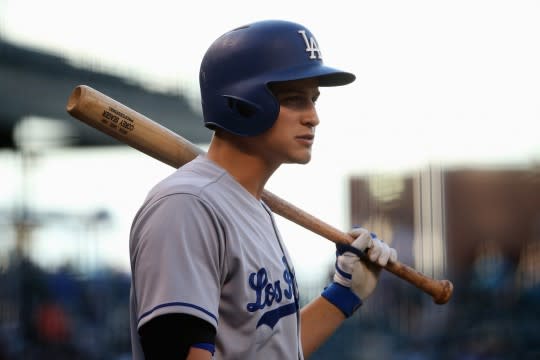How scouts got it wrong in evaluating All-Star shortstop Corey Seager

LOS ANGELES – Corey Seager is 6-foot-4 and something like 215 pounds, probably more. From draft day to big-league debut, 38 months of minor-league enlightenment, scouts studied him, and turned him over in their heads, and sketched notions of what this boyish, rangy, powerful young ballplayer might be one day, when he was a grown man.
Alongside Corey Seager, doing their jobs while he did his, more than a few scouts took the journey. Many arrived at the same conclusion along the same circuitous route.
“The first time I saw him, I thought there’s no way he’s a shortstop,” said one, and spoke for many. “The next time I saw him, I thought, well, maybe he’s a shortstop. And by the third time …”
They always chuckled at this part.
“… I thought they better not move this kid off shortstop. He’s too good.”
Seager, 22 years old and gaining on that grown-man thing, smiled and said, “Since the day I signed I was told I would [have to] move to third base. … Nobody had seen you play and you’re already getting written off.”
On Tuesday, three months into his first full major league season, Seager made his first All-Star team. As a shortstop.
The talk hadn’t much bothered him. After all, he was Ripken-sized. A-Rod-sized. Tulo-sized. What about Xander Bogaerts? Carlos Correa’s big. So’s Manny Machado.
That Seager’s size would not play in the middle of the infield and at shortstop was the easy opinion. It was not the Dodgers’ opinion, or certainly not the majority opinion, and every day Seager would report to one ballpark or another, find he was still a shortstop, and get a day closer to the big leagues, a day closer to the middle of the Dodgers’ lineup and a day closer – turned out – to being an All-Star.
“It’s awesome,” he said. “It’s really cool.”
For a half-season, he has been the Dodgers’ best position player. When he doubled in the first inning Tuesday night he was batting .307, with an 18-game hitting streak. He had 17 home runs. His on-base percentage was .365. The defensive analytics liked him just fine. The men who watch the game from dugout rails liked him better.
“Look at all the offensive players at second base and shortstop,” Orioles manager Buck Showalter said. “It’s unbelievable. Used to be you’d have to sacrifice some defense for that. And they’re not. I don’t think I’ve ever seen so many big offensive players that can defend. He’s one of those guys.”
The newer defensive analytics presumably help by putting bigger men in better positions to make what become more routine plays. There’s also the entirely unscientific notion that today’s large men are better athletes than yesterday’s, and probably better fed and trained.
“I haven’t seen one where I think, ‘Boy, they’re playing him out of position,’” Showalter said.
It’s all probably too much to consider for Seager, who hit .337 last September, when he supplanted Jimmy Rollins at shortstop, and opened this season at shortstop and batting second, and over more than 300 at-bats has had three months with the best shortstops in the game – Machado, Bogaerts, Francisco Lindor, Brandon Crawford, Danny Espinosa and Correa.
On Tuesday afternoon Dave Roberts summoned Seager to his office. Seager arrived to find general manager Andrew Friedman there as well. They told him he was an All-Star, and then he called his brother, Kyle, who was an All-Star for the Mariners two years ago, and then he said nothing to anyone, because, well, that’s his style.
“I kind of walked around and didn’t want to tell everybody,” he said. “I was a little shy about it. I don’t know, I didn’t know how to react.”
So he’ll go to San Diego, because that’s where they told him to play.


